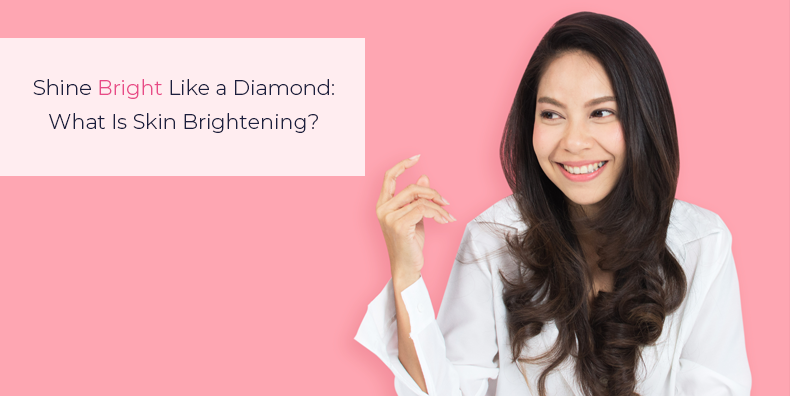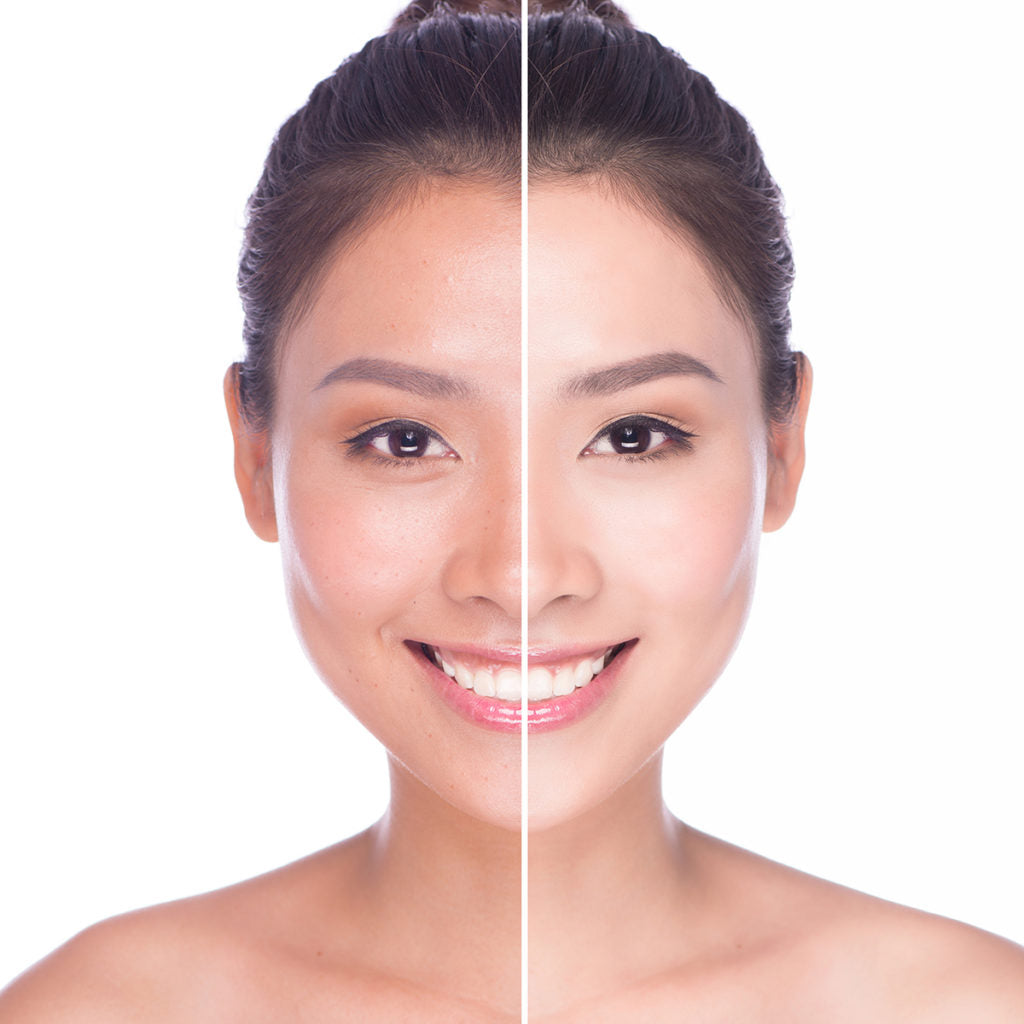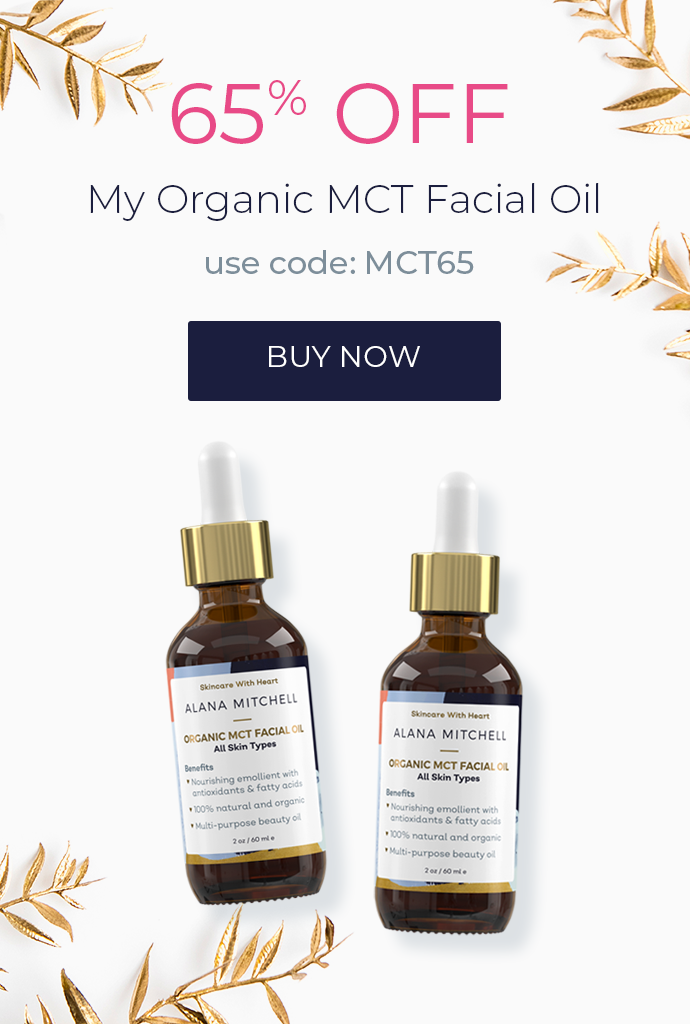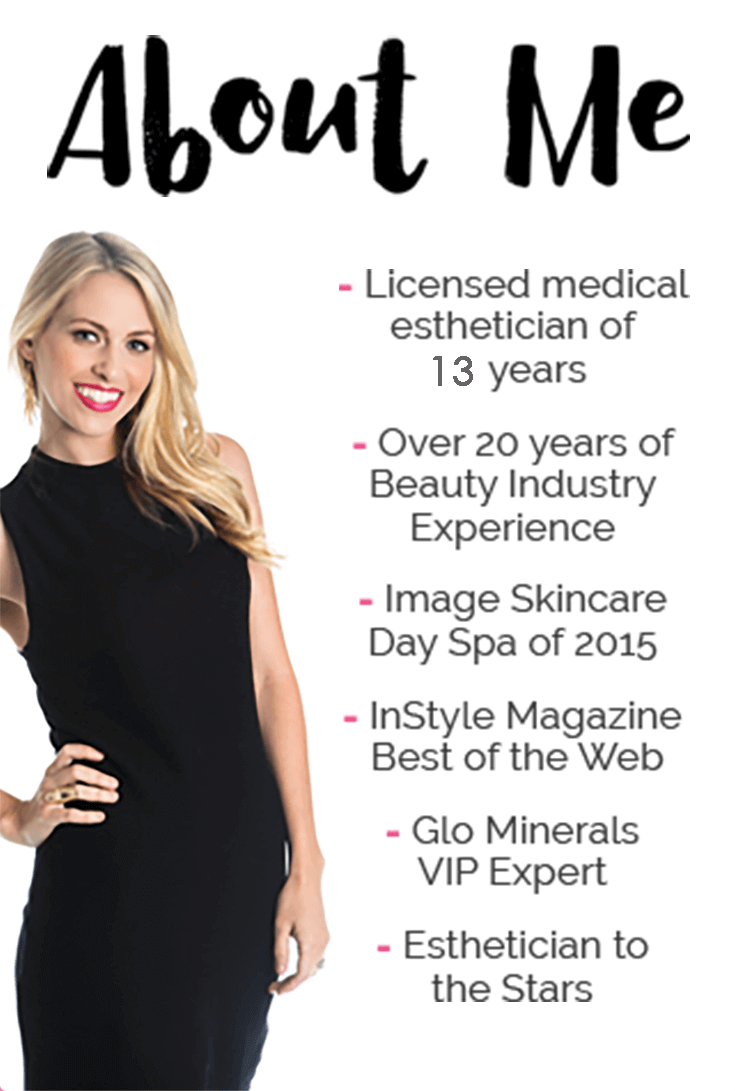What Should You Be Using In Your Skin Care Routine?
Take my quiz and get personalized recommendations from a
licensed esthetician!
What Is "Skin Brightening," Exactly?
We all know the skincare “buzzwords” that are incorporated into skincare ads, labels, and reviews.
Think adjectives like “moisturizing,” “enhancing,” or “glowing.”

After all, we both know that slathering on a “brightening” night cream won’t make your face light up the room like a toddler’s night light, but do we know what it really means to brighten our skin?
If you don’t—you’re certainly not alone.
And that’s what I’m here to help you out with today!
This blog post is dedicated to tackling the topic of brightening: what it is, what it isn’t, how to achieve it, and why you may want to achieve it (or why you may not).
Buckle up your seatbelts ladies, and let’s ride right into a crash course in brightening 101!

What Does It Really Mean When a Skincare Product is “Brightening?”
As you may have realized from some of my previous blog posts, the beauty industry can be quick to hop on a trend—whether that be a hot new ingredient or a promised effect.
The word “brightening” falls into a similar predicament, in a way.
Because “brightening” can mean so many different things, many beauty brands, bloggers, etc. use the word to mean a multitude of things.
Most commonly, brightening is used to mean lightening, fading, or, at its most extreme cases, bleaching.
Brightening is also used to describe products that may block the production of pigment and/or lift pigment out of the skin (think dark spots from the sun or acne scars).
Brightening can also be used to describe products that help to increase cell turnover and therefore speed up the flaking away of damaged upper layers of the skin to reveal the beautiful baby-soft skin below (think of it as a great compliment to your exfoliator).
Because of the variety of effects that the word “brightening” is used to encompass, the most effective way to figure out what a product really does is to take a gander at the ingredients list.
But, before we get into the ingredients, let’s tackle the topic of why you may want to brighten your skin.

The Benefits of Brightening
As I mentioned, one of the benefits of brightening can be reduction and/or complete erasure of dark spots from scarring, acne, sun exposure, etc.
Depending on your skin type, you may be more prone to dark spots, and if that’s the case you’ll definitely benefit from brightening products or procedures.
If you suffer from a skin condition such as melasma, brightening products should always be in your arsenal, not to mention your daily skincare routine.
Even if you don’t currently have melasma, you may suffer from melasma during pregnancy (as I did), which is where brightening products can lend a hand.
As an added bonus, most of the ingredients used in brightening products also do double-duty in that they provide moisture and antioxidants for your skin to drink up—and who among us couldn’t use some more of that?
For this reason, many women love brightening products not for their ability to fix what many women see as skin “problems,” but also to give them that glowy look that we get after a tropical vacation (or simply after we’ve actually had a full night of sleep).
While there are a slew of benefits to brightening that can alleviate many of our most common skincare problems (especially as we get a bit older), there are a few drawbacks to brightening.
Most importantly, certain brightening products do not work as well on darker skin tones, and you have to be careful so that you don’t end up over-correcting your dark spots by making them brighter than your base skin tone.
This is one of the reasons I recommend applying a brightening product all over your face rather than only in certain problem areas.
Another thing to look out for in brightening products is their ingredients list.
Not all brighteners are created equal, and certain ingredients and procedures have not been tested for their long-term effects on our skin, not to mention on our overall health.
This brings me to my next point—where I’ll dive deeper into which ingredients to go for and which to avoid—so keep reading!
Brightening Ingredients To Watch Out For
Ingredients To Avoid
Many brightening products incorporate hydroquinone, an ingredient that effectively bleaches the skin.
While hydroquinone can be safe for lighter skin tones, it can cause adverse aesthetic effects on those of us with darker skin tones.
This goes doubly if you plan on only applying the brightening product to certain spots on your face — you may end up looking like a leopard!
There have also been general concerns about the safety of using hydroquinone on your skin, and the jury is still out on if using hydroquinone in your beauty routine can cause adverse effects down the road.

Ingredients To Embrace
Instead of taking your chances on products with hydroquinone, I recommend vitamin C products.
Vitamin C is safer for your precious skin because its effects are more lightening and fading rather than bleaching.
Plus, vitamin C is a natural antioxidant!
Glycolic acid is another option for brightening, as it’s a great exfoliant (which means it’ll help to remove those damaged upper skin layers), and it naturally brightens the skin.
If you have sensitive skin, you may want to search for a product with lactic acid, which is a good option for brightening that likely won’t upset even the most sensitive skin.
Other ingredients to look for in a brightener include licorice extract, vitamin B3 (niacinamide), retinol, and alpha and beta hydroxy acids.
Two newer ingredients, melanozyme and kojic acid, have also been popularized for their ability to safely brighten the skin in recent years.
Both melanozyme and kojic acid help to lighten and fade dark spots without bleaching the skin or overcorrecting, which makes them safe for any skin tone!
Recommended Brightening Products
Alana Mitchell Brightening & Exfoliating Pumpkin Anti-Aging Masque
Alana Mitchell 4-in-1 Cleansing Sponge
Eminence Organics Bright Skin Moisturizer

Are There Any Cosmetic Procedures That Will Brighten My Skin?
If you’ve been religiously applying brightening products to no avail, you may want to consider making an appointment with your dermatologist to discuss alternative options.
Certain dark spots may be slow to respond to topical treatments and could benefit from something that penetrates the skin more deeply or exfoliates.
There are many options for treatments you can receive at your dermatologist’s office, but the one that’s right for you will depend on your skin type, the cause of your dark spots, and any additional health and lifestyle factors.
Some of the most common procedures that can help to brighten your skin are chemical peels, intense pulsed light (IPL), laser treatments, microdermabrasion, and Photofacials.
Last summer, a new skin brightening treatment known as intravenous glutathione, started gaining popularity as well.
Unfortunately, it’s still unclear how safe or effective this treatment truly is because there is not enough data on it, but many women claim to have seen wonderful results.
One of my favorite skincare procedures that will brighten your skin is a chemical peel.
Not only will a chemical peel help to brighten your skin by removing damaged outer layers of your epidermis, it will also stimulate collagen production (hello: reduced wrinkles!).
Additionally, chemical peels can reduce the appearance of large pores, help to prevent acne, and fade discolorations overall.

Why Skin Brightening Is Controversial In Certain Cultures
There’s a good chance that while reading this blog post, you’ve thought to yourself, “isn’t it a bit controversial to use the term ‘lightening’ or ‘brightening’ to describe better skin?”
You’re not wrong!
It’s easy to get caught up in terminology that may not sound super friendly, but ultimately brightening skincare should ideally work on every skin tone to balance out your natural (and beautiful) skin to one shade.
That being said, a dark spot on me may be a very different shade than a dark spot on you.
Historically, skin brightening has been controversial in certain cultures as well.
Countries such as China, India, Japan, and Africa have used skin brightening for thousands of years.
It’s still pushed in beauty product advertisements and marketing to this day, and a favoritism - whether conscious or unconscious - toward lighter skin tones still remains.
Similar to antiquated (and sometimes painful) beauty standards such as Chinese foot-binding, skin brightening was previously used in certain countries (such as the ones I mentioned above) to signify a higher class.
Specifically, many countries with strict hierarchical systems (such as India’s caste system), viewed those with darker skin as lower class because it signified that they worked outside in the fields or the streets.
In addition to this view being extremely problematic (because duh, you should never judge someone on the color of their skin), the skin bleaching that went on in these ancient civilizations was extremely dangerous.
For example, many sources claim that ancient Egyptians actually used lead-based cosmetics to achieve lighter skin—something they claim is visible on their remains.
This skin brightening led to exogenous ochronosis, a skin condition that some believe can still be caused by the use of skin brightening products with hydroquinone.
The difference between brightening today vs. the brightening of ancient civilizations is that many higher class people from those times were actually bleaching their skin.
On top of that, they were using harsh ingredients, like the aforementioned lead, that deteriorated their overall health.
But, most importantly, the goal in those times was to lighten your complexion to mess with your natural skin tone, and that’s not at all the goal of the skin brightening I’m talking about!
Today, skin brightening is more about removing dark spots or patches to give your face a uniform shade all around your beautiful features and genetically gifted shade of skin.
Plus, to give you that youthful glow that makes you look happy and healthy!

Additional Tips For Brighter Skin
In addition to loading up on brightening products to help combat your sunspots, make sure you’re wearing SPF every day to prevent new sunspots from showing up (not to mention to prevent old sunspots from getting worse).
I’ve said it before and I’ll say it again, but protecting your skin from the sun can prevent a multitude of skincare woes—trust me.
In addition to daily sunscreen, ladies, remember to have patience when trying to fade dark spots.
Chances are, your dark spots may be the result of years (or decades) of sun exposure.
No product, no matter how powerful (or controversial) can erase so many years worth of damage overnight.
If you find yourself frustrated with your skin’s progress, I recommend taking a “before” photo and taking “after” photos every month or so to track your progress.
It can be difficult to notice changes in your skin when you’re looking at yourself in the mirror every day, but by taking photos to document changes, you may realize that your brightening products are doing a lot more than you realize!
Lastly, if you’re using an anti-acne product, make sure to apply this product before you apply your skin brightener to ensure that you’re getting the most potent effects.
Final Thoughts
Now you can add "brightening" to your mental skincare dictionary!
I am a believer in using brightening products to even skin tone and brighten dark spots.
However, I believe every single skin tone is beautiful and feel that no one should be pressured into making their complexion a lighter color overall.
I've said it before, and I'll say it again: YOU are BEAUTIFUL!
Have you tried skin brightening products? What was your experience with them like? I’d love to hear all about it in the comments below!
Top Brands
New Brands

Recent Posts

Are You Taking the Right Steps to Care for Your Skin?
Take the Quiz
Skincare Secrets!
10-step guide for healthy, beautiful skin after kids.
100% privacy. I will never spam you!



















